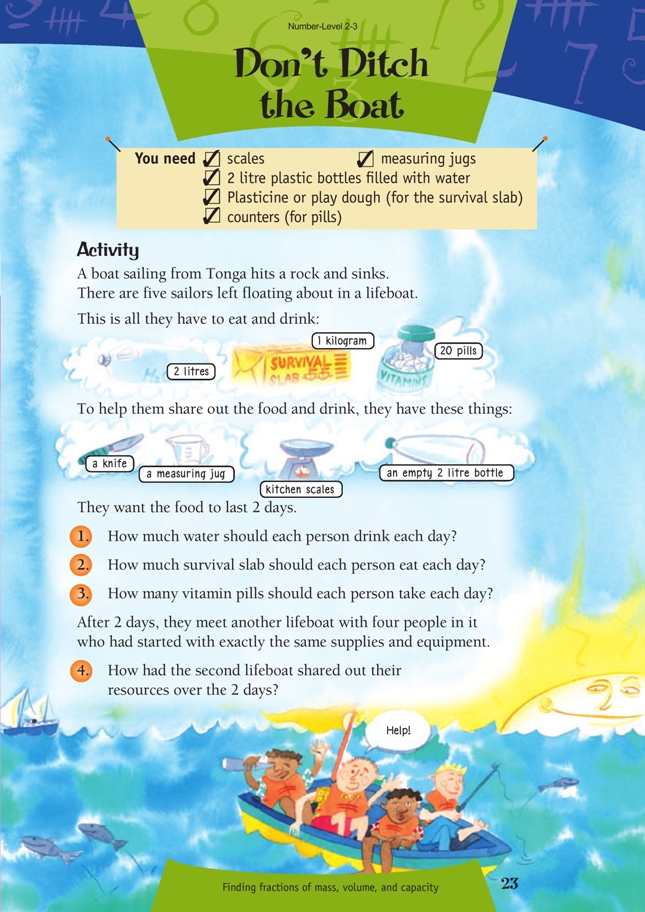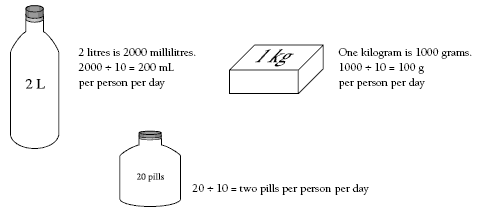This is a level 3 number and measurement activity from the Figure It Out series. It relates to Stage 6 of the Number Framework.
A PDF of the student activity is included.
Click on the image to enlarge it. Click again to close. Download PDF (237 KB)
find fractions of mass and volume
plasticine or play dough (for the survival slab)
FIO, Level 2-3, Number, Don't Ditch the Boat, page 23
counters (for pills)
Providing students with a physical model of the problem, that is, a full 2 litre bottle of water, 1 kilogram of Plasticine or play dough, and a jar of 20 counters, will help them to work through the problem by identifying the important information.
For five sailors, 2 litres of water, 1 kilogram of survival slab, and 20 pills must last for 2 days.
Suggest that students consider each of the rations separately. A logical path to the solution might be:
Five people for 2 days requires 10 equal parts (tenths).
Some students may divide the ratios in half to get a daily amount and then divide this amount into fifths. Similar reasoning can be applied to the situation in question 4, where there are four people in the boat.
2000 mL ÷ 8 = 250 mL per person per day (water)
1000 g ÷ 8 = 125 g per person per day (survival slab)
20 ÷ 8 = 21/2 pills per person per day (vitamins)
Students who are not familiar with metric units are likely to use innovative ways to divide the amounts. For example, eighths of a 2 litre bottle can be found by:
Repeat the pouring with quarters of a bottle to get eighths.
Answers to Activity
1. 200 mL
2. 100 g
3. 2
4. 250 mL of water, 125 g of survival slab, and 2 pills each day or 2 pills one day and 3 pills the other day.


